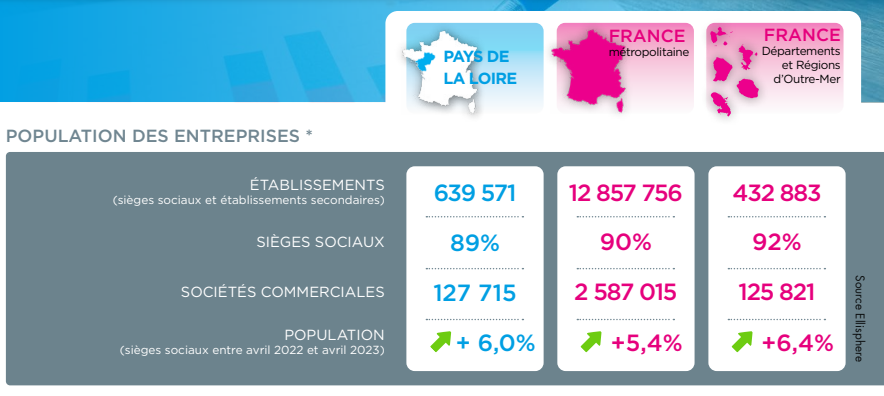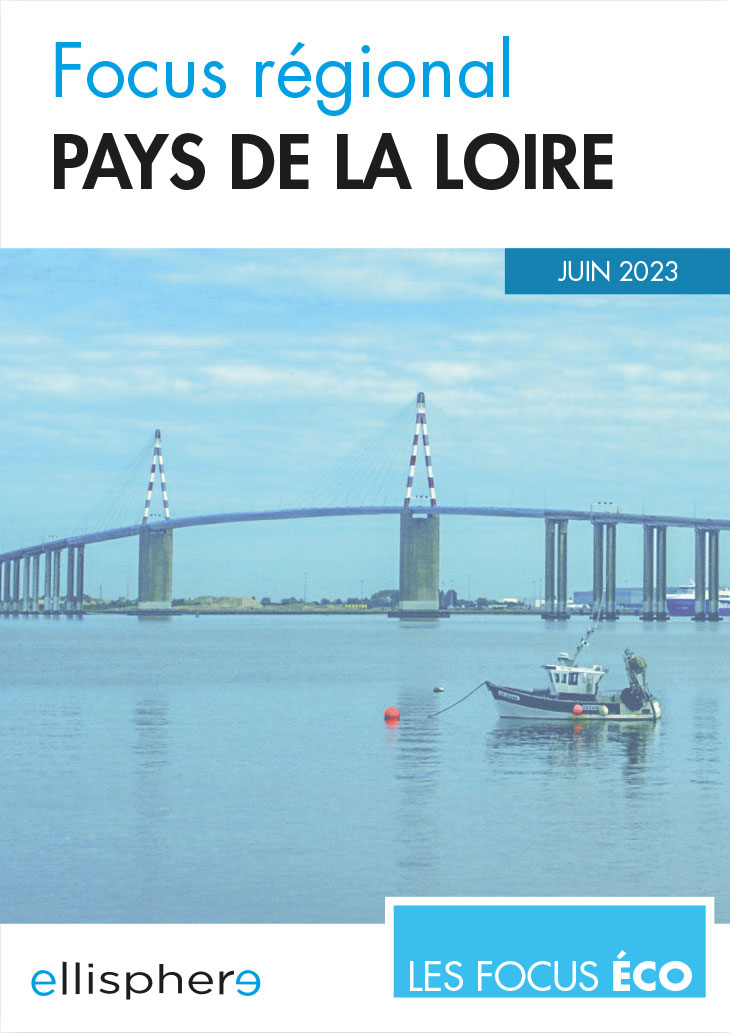Entrepreneurial momentum slows in France but remains strong in Pays de la Loire
In 2022, the Indice de Dynamisme Entrepreneurial (IDE), the ratio of business creations to disappearances, slowed significantly in mainland France. At the end of December 2022, it stood at 1.5 new businesses for 1 disappearance over a sliding 12-month period, compared with an index of 1.7 in 2021, and 2 in 2020! Over the same period, an analysis of the Pays de la Loire region's entrepreneurial dynamism shows FDI above the national average in the 5 départements that make up the region. At the end of December 2022, over a sliding 12-month period, the region's index stands at 1.7 business start-ups for 1 disappearance (compared with 1.5 in mainland France and 1.6 in the French overseas departments and regions).
New business parks and company start-ups still strong in the Pays de la Loire region
As part of this entrepreneurial dynamic, two new business parks have been created in the Pays de Loire region, in Château Gontier and Pornic. Nine business parks specialize in industry, mainly food processing and transport (40%), traditionally dynamic sectors. More generally, GDP per capita in Pays de Loire is 3.5%, which naturally places the region at a very high level. At the same time, the unemployment rate is the lowest in the country, at 5.8% versus 7%.
...But companies' financial debt is increasing
What we can learn from the 2022 balance sheets of companies in the Pays de la Loire region: excessively high liquidity ratios (state-guaranteed loans, indebtedness, etc.). These ratios will be undermined tomorrow by excessive loan repayment levels. Between 2019 and 2020, companies in the region are likely to see a sharp increase in their financial debt (+8 points), with the resulting problem of annual debt servicing. At the same time, the claims experience of companies in the region has deteriorated significantly (particularly in Vendée), with a major impact on employment. However, as in the rest of France, less than 6% of business closures are the result of compulsory liquidation (a stable figure).
The importance of measuring a company's level of indebtedness and its ability to re-leverage.
In this context, it is necessary to establish a financial debt rating to measure a company's ability to meet its debt obligations, and to re-enter debt if necessary. To determine the risk, three ratios need to be taken into account. Repayment capacity, gearing and annual debt service. An indicator of EBITDA variability is associated with this debt risk. Cash generation is a key component in debt repayment. This indicator measures the variability of the company's margin as a function of the current margin, the company's capital intensity (a supermarket may be satisfied with a 2% margin, but not an equipment manufacturer whose business depends on major investments), and finally as a function of the risk linked to the business sector. Applying this financial debt rating, it appears that of the 20 biggest company failures in the Pays de la Loire region over a sliding 12-month period to the end of March 2023, 13 could have been classified as high risk.


Download our complete study now.
Every month, our economic division decrypts the news of the economic sectors and gives you its lessons.


